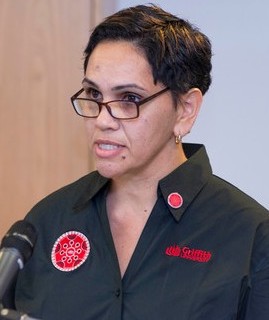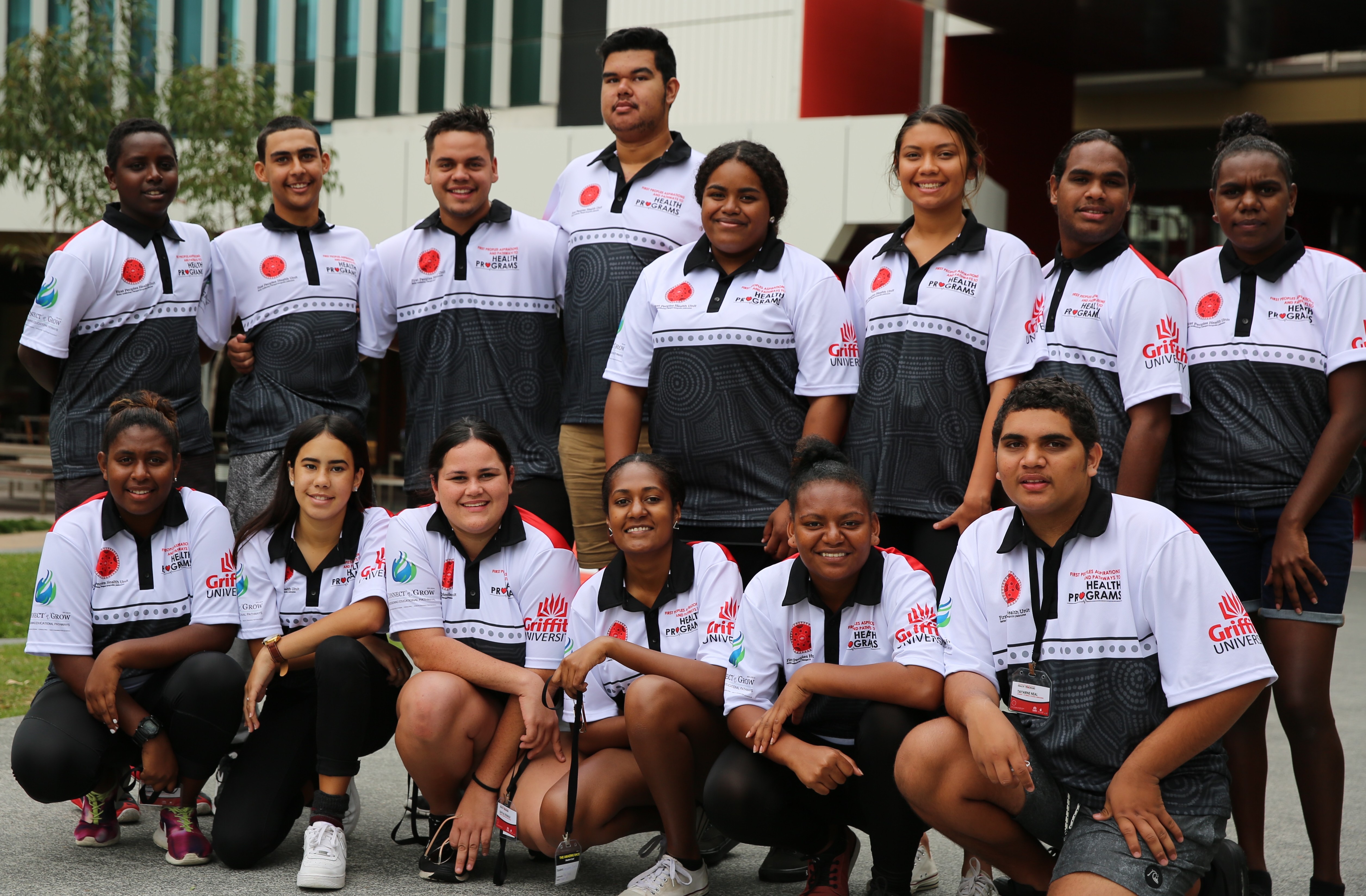Kayla Donald understands the problems facing by young expectant mothers in remote Indigenous communities.
It’s the reason the Kirwan State High School student, whose community is located in Yunguburra near Cairns, came to Griffith University as part of the Aspirations and Pathways to Health Program.
“I want to become a midwife so I can go out to communities and help the women have their babies so they don’t have to come into town,” she said. “They can be in their own community and be comfortable in their surroundings.”
For Nathaniel Kyle, from St Teresa’s Catholic College Abergowrie, it was the effects of chronic disease within his own family that inspired him to explore a career in health.
In Nathaniel’s eyes, the turning point came when he could see the suffering and ‘not being able to do anything about it’.
“I want to be the first one to help them out,” he explained.
Kayla and Nathaniel were among 14 Indigenous high school students from remote and regional areas in North Queensland and the Northern Territory who attended the Aspirations and Pathways to Health Program which is now in its third year.
Access to careers
During their week-long visit, the students attended nursing and midwifery workshops, as well as dentistry and sports medicine workshops, on the Gold Coast campus at Griffith University. They also were taken on a tour of Gold Coast University Hospital.
The program has been pivotal in providing improved access to careers in health for more than 180 students who have already graduated from the program.

“Of the 14 students who participated this year about 60 per cent are interested in university,” said Professor Roianne West, the Director of Griffith University’s First Peoples Health Unit.
“Our challenge is to maintain that interest because most of these students are in year 11.
“These kids come from some of our most remote communities in northern Australia. It’s not unique that they are first in the family (to seek higher learning), because all of them are first in the family,but coming from very small communities and from communities where university is a foreign concept is particularly challenging.
“Bringing them down to Griffith to study on either of our campuses is quite a significant move away from their family, friends and their community networks.”
Indigenous health professionals
Professor West said the Aspirations and Pathways to Health Program is part of a broader goal by Griffith University to increase the number of Indigenous health professionals in Australia.
“Griffith University has a strong commitment to pathways as well as to the Aboriginal and Torres Strait Islander education agenda,” she said.
“The establishment of the First Peoples Health Unit ensures we have a targeted approach to increasing participation and the pathways program is a significant element of that.
“Obviously if we get our pathways right the kids come in academically stronger and it ensures they have a higher likelihood of succeeding in their programs.
“The First Peoples Health Unit has a strong commitment to the agenda of closing the gap and ensuring that we are providing education and training to not only increase the Aboriginal and Torres Strait Islander health workforce, but also to increase the cultural capability of the rest of the health group students.
“Three per cent of our current popular student rate is Aboriginal and Torres Strait Islander, so we have to do a lot better at actually completing those students. Griffith University, and the health group in particular, has an aim of being a leader in increasing the number of Aboriginal and Torres Strait Island health professionals across the country.”
